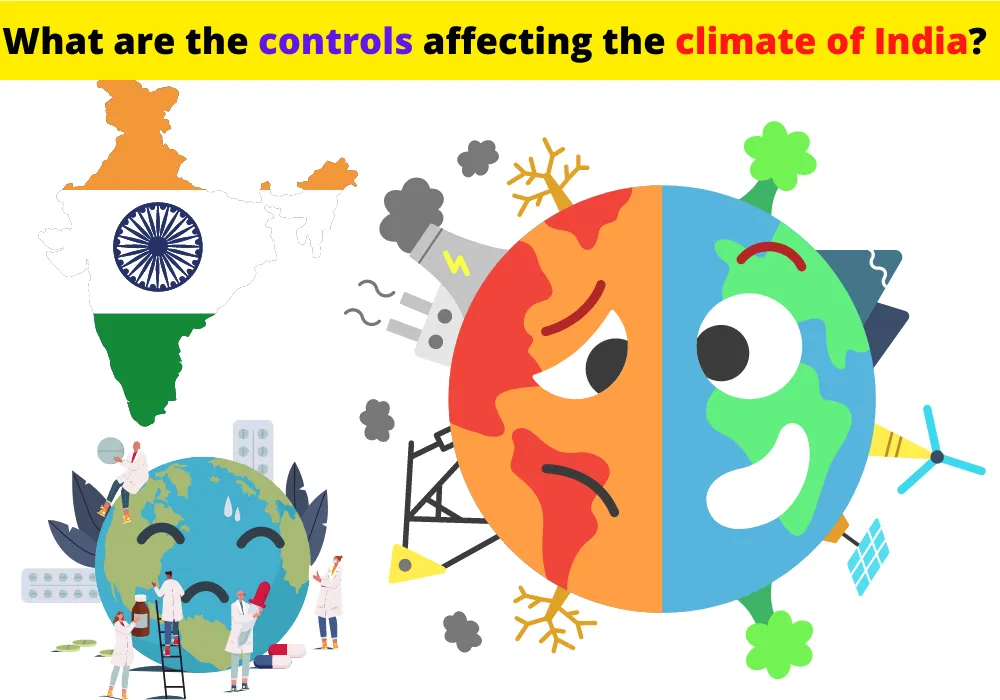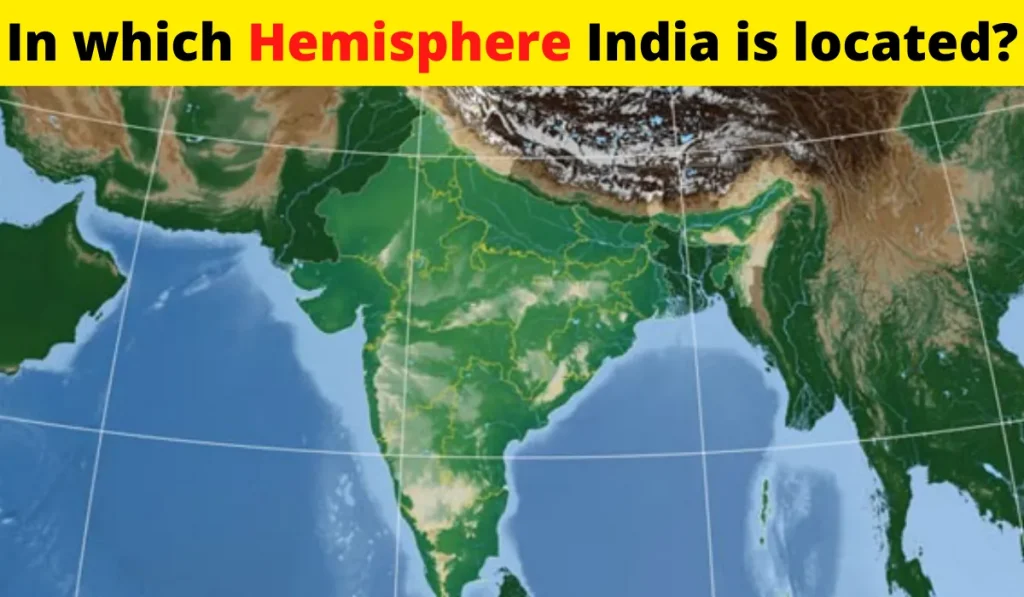Contents
Climate changes are affecting the nation of India in a number of ways. There are many factors that influence climate in India. Some of the control factors include natural climate fluctuations, the economy, population changes, and other countries. This blog will look at what are the controls affecting the climate of India.

Climate changes are affecting the nation of India in a number of ways. There are many factors that influence climate in India. Some of the control factors include natural climate fluctuations, the economy, population changes, and other countries.
Controls affecting the climate of India are:
- India experience wide variation in temperature.
- It is because the country has Himalayas in the north and water bodies in the south.
- A few places in India are far from the coasts, a few are at high altitudes and the others are on plains.
Example: Delhi has wide differences in temperature across the months whereas in Chennai, there is not much difference.
In general, factors which affect the climate of a region are called the Climatic controls.
Climatic controls include:
- Latitude or distance from the equator.
- Land and water relationship
- Relief
- Upper air circulation
1. Latitude or distance from the equator
The earth is divided into the following regions, based on their distance from the equator.
- Tropical ( close to the equator )
- Polar ( close to the poles )
- Temperate ( places in between these two extremes )
The temperature goes down as we go away from the equator.
The temperature of the atmosphere at a particular place on the earth depends on the insolation i.e., heat from sun rays received there.
Intensity of isolation is more in the equatorial region that the polar region.
The reason for this is, the angle of incidence is 90o at equator and thus causes high temperature and the angle of incidence changes as we go away from equator to poles.
The average annual temperature of a place decreases as we go away from equator towards the poles.
India is situated roughly between 8o-37oN latitudes.
It is divided into two equal parts by the Tropic of cancer.
The southern part of India recline in the tropical belt closer to the equator.
It has high temperature than the northern part, which lies in the temperate zone.
For example, the climate of kanyakumari is completely different from that of Bhopal/Delhi.
2. Land water relationship
- The nature of the surface, determines the amount of sunlight/heat, it absorbs or radiates back.
- Good absorbers of heat are darker areas like heavily vegetated regions (example: Kerala).
- Good reflectors of heat include lighter areas like snow and ice covered regions (example: Kashmir)
- When compared to land, an ocean absorbs and loses heat slowly. This affects climate in many ways.
- The influence of the sea is moderate on southern India, which has a long coast line.
- There is not much difference in the day and night temperatures, and in summer and winter as well. This is called equable climate.
3. Relief
- The temperature decreases as altitude increases. As a result, hills and mountains will have lower temperature than the plains.
- In this way, the climate of a particular area is greatly influenced by its relief or altitude.
- Example, hills stations of the Himalayan region like Shimla, Nainital, Gulmarg and Darjeeling have a cool climate even in severe summer.
- Similarly, certain regions in south like Udagamandalam (Ooty) and Kodaikanal are cool when compared to the regions near the coast.
4. Upper air circulation
- The subtropical high pressure belt of the northern hemisphere gives rise to permanent winds.
- These winds are called trade winds (trade means track) and blow towards the equatorial low pressure region, reflecting towards west.
- India is located in the belt of dry north-east trade winds.
- India’s climate is also affected by the movement of upper air currents (called jet streams).
- They are the fast flowing air currents, in a narrow belt of the upper atmosphere, above 12,000 m.
- The speed varies between 110km/hr in summer to about 184 km/hr in winter.
- A jet stream cools the neighboring atmosphere and causes rain.
- In the east, jet streams develop at about 25oN.
Final words
India is a large country, with a diverse geographical location. There are many possible climate controls, but one in particular is the control of greenhouse gases. Greenhouse gases are the ones that are trapping the sun’s heat, contributing to the global climate change. In order to combat greenhouse gases, India has implemented a plan.
The plan includes reducing the carbon emissions, the use of low-carbon technologies, and the development of renewable energy sources. This has led to a rapid decline in greenhouse gas emissions. India has also been monitoring the climate changes and adjusting their plans accordingly.
We hope you enjoyed our article on the climate controls affecting India. We know that many people are interested in learning about the effects that certain factors such as CO2 and pollution have on the climate of different countries, so we decided to write an article about India!
The result was a blog post on the different climate controls that affect the climate of India with research from the links provided in our article. If you have any questions, please don’t hesitate to reach out to us at EduKar.
Thank you for reading, we would love to hear from you!





![Corporate Accounting [Important Questions & Answers with MCQ] Corporate Accounting Important Questions & Answers](https://edukar.in/wp-content/uploads/2022/09/Corporate-Accounting-Important-Questions-Answers-1024x597.webp)


![Web application and Security Class 10 [Questions Answers & MCQs] Web application Class 10 Questions & Answers](https://edukar.in/wp-content/uploads/2022/09/Web-application-Class-10-Questions-Answers-1024x597.webp)
![Zoology Important Questions [Class 11th-English medium] Zoology Important Questions class 10 english medium](https://edukar.in/wp-content/uploads/2022/09/Zoology-Important-Questions-class-10-english-medium-1024x597.webp)


![Biology Class 10 Very important [Questions &Answers] Biology Important Questions with Answers class 10](https://edukar.in/wp-content/uploads/2022/09/Biology-Important-Questions-with-Answers-class-10-1024x597.webp)



